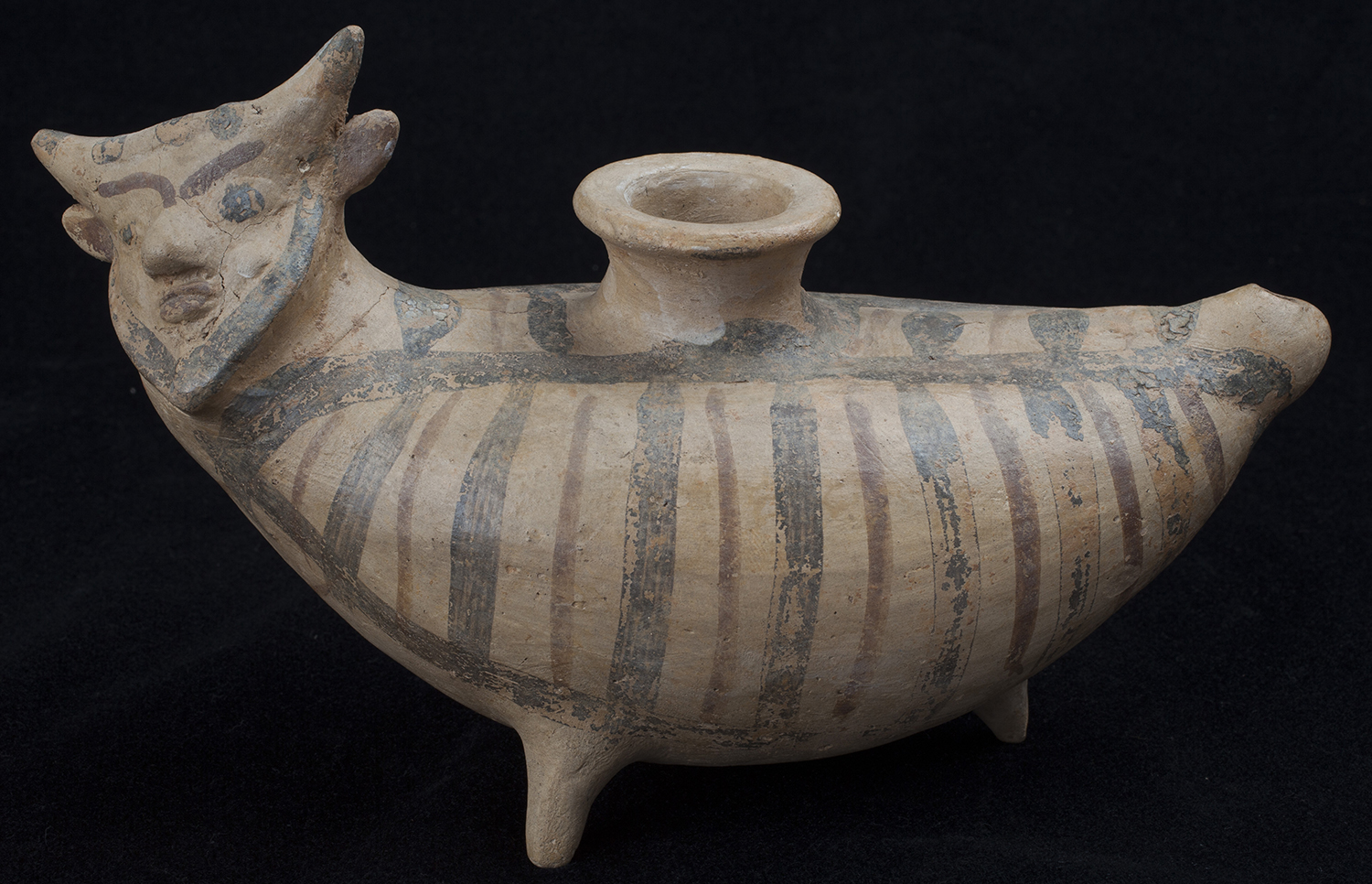
Pottery
3rd c. BC
Mas Castellar (Pontós - Alt Empordà)
The askos of Achelous is a ceramic ware of the second half of the 6th century BC – early 5th century BC. The cup presents a bearded male head at one end. The triangular-shaped head is depicted turned towards one side of the piece; it has ears and two horns that have led it to be identified as the river god Achelous.
The body, which forms the container for the liquids, is elongated and resembles the shape of a wineskin (the original Greek name for which was askos) with a raised pointed end with a hole through which the contents were poured. On the back it has a larger circular opening framed by a spout that was used to fill the vessel, possibly with wine. Below, three small solid legs with a conical profile were used to support the piece. The fine glaze that covers the surface has a painted decoration with vertical stripes of black paint alternating with finer bands of a wine-coloured hue. The features of the face, concisely modelled and somewhat caricatured, are also highlighted with paint.
The vessel is in the Ionian tradition, but of western Greek production. It was probably made in the workshops of the Phocaean colony of Massalia during the second half of the 6th or early 5th century BC. The morphology of this piece allows it to be interpreted as a vessel for ritual use, intended for libations as part of a cult or funeral ceremony. It was found in Emporion, although its context of origin is unknown. It could have been part of the grave goods in a Greek tomb in the archaic necropolis of Portitxol, which suffered intense looting in the late 19th and early 20th centuries. Numerous objects from the funerary offerings of this first Emporian cemetery ended up in the hands of antiquarians and collectors, or were acquired by museums, as in the case of this piece, which entered the collection of the Girona Provincial Museum of Antiquities and Fine Arts –now the Girona branch of the Museum of Archaeology of Catalonia– in September 1896.
Other examples of askoi with similar morphologies are known in both Massalia and Emporion, as well as in other colonial establishments in Magna Graecia or Sicily. There are also bearded terracotta heads belonging to vessels of the same type –interpreted as the theriomorphic figure of Achelous or, in some cases, Silene– also referring to the Dionysian sphere.
In Greek mythology, Achelous was the most important river deity. He was the son of Oceanus and Tethys and father of the Sirens and various water sources and springs, including Pyrene, Dirce and Castalia. When he fought Heracles over the nymph Deianira, he turned into a snake and finally a bull. He was defeated by the hero, who tore off one of his horns, which he was only able to recover by exchanging it for a horn from Amalthea, a symbol of abundance and fertility.
Marta Santos
